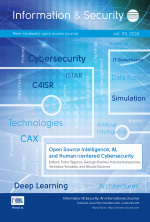Inductive Discovery of Criminal Group Structure Using Spectral Embedding
Source:
Information & Security: An International Journal,Keywords:
Italian Mafia, network evolution, Oranised crime, Simmelian backbone, Social network analysisAbstract:
Social network analysis has often been applied to the content of communications within criminal groups to understand their internal structure and dynamics. While access to the content of communications may be restricted by constitutional and procedural constraints, this article applies advanced network analysis techniques based on spectral embedding to telephone communications data. Spectral embedding facilitates deeper analysis by embedding the graph representing a social network in a geometric space such that Euclidean distance reflects pairwise node dissimilarity. This enables drawing a network in ways that accurately reflect the structure of the underlying group, and computing properties directly from the embedding. We illustrate spectral approaches for two Ndrangheta drug-smuggling networks, and extend them to a) examine triad structure (through the identification of the Simmelian backbone), which elicits key members, and b) to display temporal properties, which illustrates changing group structure. The results show that the two groups, although having the same purpose and coming from the same criminal milieu, have substantially different internal structure which was not detectable using conventional social-network approaches. The techniques presented in this study may support law enforcement in the early stages of an investigation.
